Are you looking to learn more about snow fencing? Well, you’re in the right place! In this article, we’ll delve into all the details about snow fencing and how it can be beneficial to you. From its purpose and installation to the different types available, we’ll cover it all. So, get ready to dive into the world of snow fencing and find out everything you need to know!
Snow fencing is a great solution for minimizing the negative effects of snow accumulation. Whether you want to protect your driveway, garden, or property, snow fencing can prevent snow from piling up in unwanted areas. It works by creating a barrier that slows down the wind, causing the snow to be deposited in specific areas instead of spreading across a large surface. In this article, we’ll explore the various materials used for snow fencing and their effectiveness in different weather conditions. We’ll also discuss the best practices for installing snow fencing and how to maintain it for long-term use. So, if you’re curious about how to manage snow effectively with the help of snow fencing, keep reading and we’ll answer all your questions!
All About Snow Fencing
Snow fencing is a versatile tool that plays a crucial role in snow control and management. Whether you’re dealing with heavy snowfall in residential areas or need to protect crops on farmland, snow fencing proves to be an effective solution. In this article, we will explore the different types of snow fencing, its installation process, benefits, and various applications in different environments. So, let’s dive into the world of snow fencing!
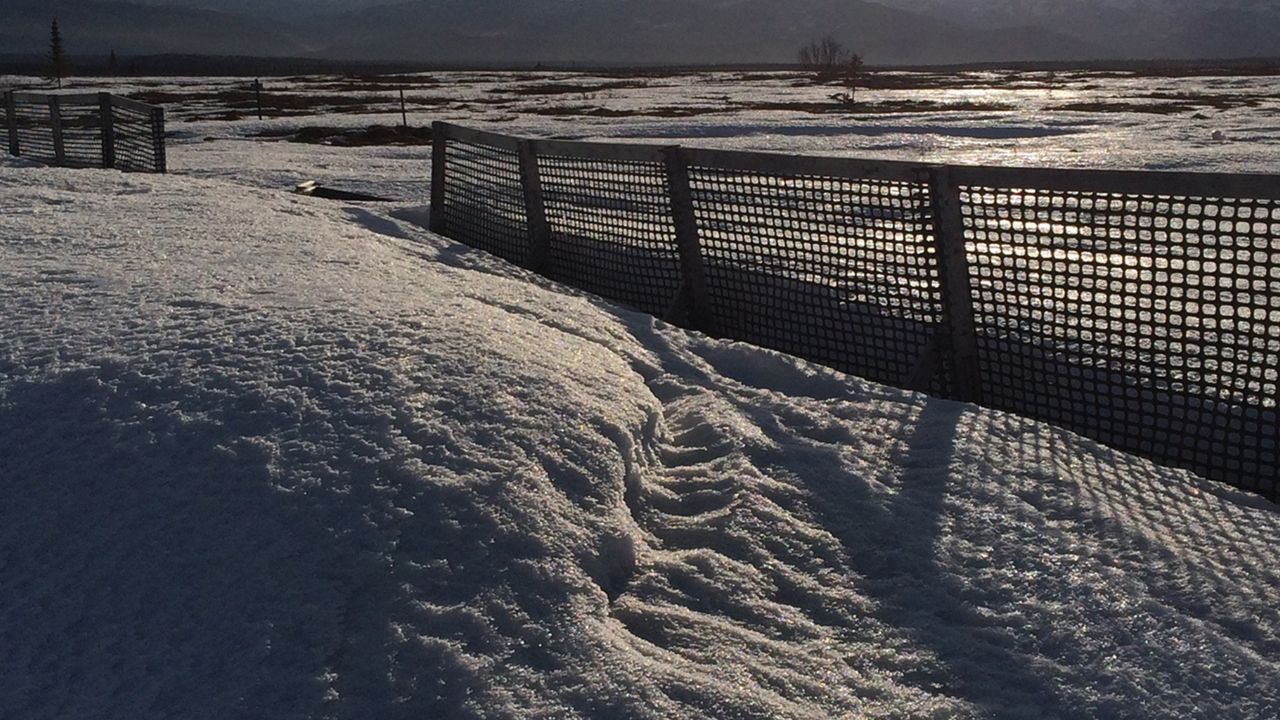
What is Snow Fencing?
Snow fencing, as the name suggests, is a specialized type of fencing used to control and manage snow accumulation. It is designed to create a barrier that alters the wind flow patterns, reducing snow accumulation in certain areas while preventing drifting and blowing snow. Snow fencing is typically installed in regions that experience heavy snowfall or extreme weather conditions during the winter.
Definition of Snow Fencing
Snow fencing is a structure made of different materials that is installed in strategic locations to control and manage snow accumulation. It acts as a barrier, altering wind patterns to decrease or redirect snow accumulation in desired areas, protecting landscapes, structures, and ensuring road and highway safety.
Purpose of Snow Fencing
The primary purpose of snow fencing is to regulate snow accumulation and prevent the hazards associated with it. By altering wind patterns, snow fencing helps to reduce snow accumulation on roadways, increase visibility for drivers, protect landscapes and structures, and create safer environments for both urban and rural areas.
Historical Background of Snow Fencing
The concept of using fencing to control snow dates back centuries. In the 19th century, farmers in the United States noticed that rows of wooden slat fences reduced snow accumulation, creating areas of less snow cover. This observation led to the development of the first snow fences, which were made of wooden slats nailed to posts. Over time, the design and materials used for snow fencing have evolved, resulting in various types of snow fences available today.
Types of Snow Fencing
Snow fencing comes in different types, each with distinct characteristics and applications. Let’s explore the most common types of snow fences.
Wooden Snow Fencing
Wooden snow fencing is one of the oldest and most traditional types of snow fencing. It consists of evenly spaced wooden slats attached to posts, creating a solid barrier for controlling snow accumulation. Wooden snow fencing is durable, easy to install, and can effectively reduce blowing and drifting snow. However, it requires regular maintenance due to the natural decay of wood over time.
Plastic Snow Fencing
Plastic snow fencing is a popular alternative to wooden snow fencing due to its durability and low maintenance requirements. It is made of plastic mesh or netting, typically in bright orange or green colors for visibility. Plastic snow fencing is lightweight, flexible, and easy to handle, making it a preferred choice for temporary snow control applications. It is commonly used for residential driveways, construction sites, and roadways.
Metal Snow Fencing
Metal snow fencing, also known as wire snow fencing, is a sturdy and long-lasting option for snow control. It is made of galvanized steel or aluminum wire mesh, providing a strong barrier against snow accumulation. Metal snow fencing is commonly used for highway and roadway applications, as it can withstand harsh weather conditions and heavy snow loads. However, it can be more expensive and challenging to install compared to other types of snow fences.
Fabric Snow Fencing
Fabric snow fencing, also referred to as snow control netting, is a lightweight and flexible option for snow control. It is made of high-density polyethylene (HDPE) material woven into a mesh pattern. Fabric snow fencing is quick to install and offers excellent visibility due to its bright colors. It is commonly used in residential areas, along walkways, and for temporary snow control applications.
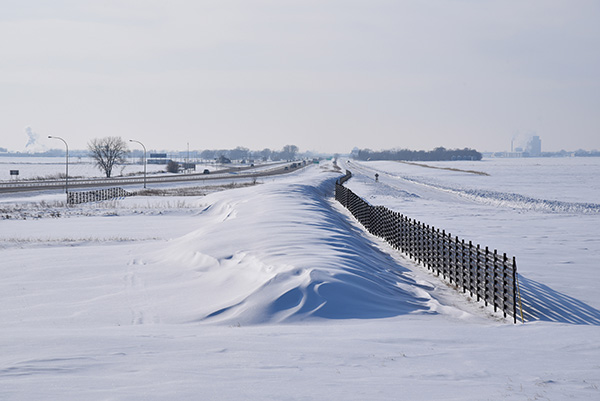
Installation of Snow Fencing
Proper installation of snow fencing is essential to ensure its effectiveness in snow control. Here are the key steps involved in installing snow fencing.
Choosing the Right Location
Before installing snow fencing, it is crucial to determine the areas where snow control is necessary. Analyze the wind direction and patterns, as well as any obstacles that may affect snow accumulation. Ideal locations for snow fencing include the leeward sides of roads, driveways, structures, and areas prone to snow drifting.
Preparing the Area
Clear the designated area of any debris or obstructions that may interfere with the installation. This includes removing any existing snow, rocks, or vegetation.
Setting up the Snow Fence
Start by choosing the appropriate type of snow fence based on your specific requirements. Begin installing the snow fence at one end, anchoring it securely with posts or stakes. Continue stretching and fastening the fence along the desired length, ensuring it is taut and level. For taller snow fences, additional support may be required.
Proper Anchoring Techniques
To ensure stability and longevity, it is crucial to anchor the snow fence properly. Use sturdy fence posts or stakes made of materials such as wood, metal, or fiberglass. Space the posts or stakes evenly, ensuring they are firmly planted in the ground. For extra stability, consider burying a portion of the posts below the ground level.
Benefits of Snow Fencing
Snow fencing offers numerous benefits in various applications. Let’s explore some of the key advantages of using snow fencing.
Reduces Snow Accumulation
One of the primary benefits of snow fencing is its ability to reduce snow accumulation. By altering wind patterns, snow fencing creates areas of reduced snow cover, making snow removal and management easier. This is particularly beneficial for roadways, driveways, and pedestrian pathways, ensuring safe and accessible transportation during winter months.
Increases Road Safety
Snow accumulation on roads and highways can significantly impact driving conditions, leading to accidents and road closures. Snow fencing helps to reduce the amount of snow on roadways, increasing visibility for drivers and enhancing overall road safety. By minimizing drifting snow, it also reduces the need for frequent plowing and de-icing, saving time and resources.
Protects Landscapes and Structures
Snow accumulation can be detrimental to landscapes and structures, causing damage and erosion. Snow fencing acts as a protective barrier, preventing excessive snow buildup around homes, gardens, and other structures. It helps to maintain the integrity of landscapes, minimizes the risk of flooding or structural damage, and preserves the aesthetics of outdoor spaces.
Prevents Drifting and Blowing Snow
Snow drifts and blowing snow can create hazardous conditions, obstructing pathways and creating uneven surfaces. Snow fencing effectively controls drifting and blowing snow by altering wind patterns, redirecting the snow away from targeted areas. This is particularly beneficial for open spaces, airports, parking lots, and other large areas where snow accumulation can pose safety risks.
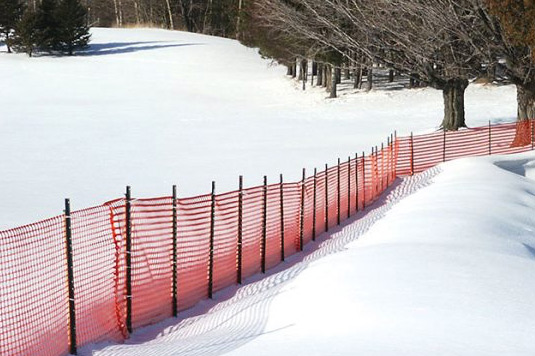
Snow Fencing and Windbreaks
Apart from snow control, snow fencing can also act as an effective windbreak. Let’s explore how snow fencing functions as a windbreak and its benefits in snow control.
How Snow Fencing Acts as a Windbreak
Snow fencing alters wind patterns by creating a barrier that breaks the wind force and redirects it. When wind encounters a snow fence, it slows down and rises, causing the snow to settle before it reaches the protected areas. This results in reduced snow accumulation and prevents drifting and blowing snow, ensuring better snow control in specific locations.
Designing Effective Windbreaks with Snow Fencing
To maximize the windbreak effect, design considerations are crucial. The height, spacing, and placement of snow fencing should align with the desired outcome. Taller fences provide better protection, but they may create excessive turbulence or shadow areas. Proper spacing between fences ensures optimal wind reduction without creating areas where snow can accumulate.
Benefits of Windbreaks in Snow Control
Windbreaks created by snow fencing offer several benefits. They reduce snow accumulation in targeted areas, protect structures and landscapes from snow damage, and enhance overall snow control efforts. Windbreaks created by snow fencing are particularly valuable for agricultural purposes, protecting crops and livestock from severe winter conditions.
Snow Fencing for Agricultural Purposes
Snow fencing serves as an essential tool in ensuring the success and safety of agricultural operations during winter. Let’s explore its applications in agriculture.
Protecting Crops and Livestock
Snow accumulation can be detrimental to crops and livestock, impacting agricultural productivity and animal welfare. By strategically installing snow fencing, farmers can create windbreaks that protect crops and livestock from drifting and blowing snow. This helps to maintain crop health, prevent losses, and ensure the overall well-being of farm animals.
Preventing Soil Erosion
Winter snowfall combined with melting snow can cause significant soil erosion. Snow fencing helps to mitigate soil erosion by preventing the buildup of excessive snow in certain areas. This protects the topsoil from erosion, preserving its fertility and reducing the risk of nutrient loss. Snow fencing also helps to retain moisture in the soil, promoting healthy plant growth during the spring thaw.
Enhancing Microclimates for Agriculture
Snow fencing can create microclimates that benefit agricultural cultivation. By strategically positioning snow fences, farmers can alter wind patterns and create areas with reduced snow accumulation. This allows for earlier planting in spring and extends the growing season, maximizing agricultural productivity and yields. Snow fences can also protect sensitive crops from frost damage by minimizing cold air movement.
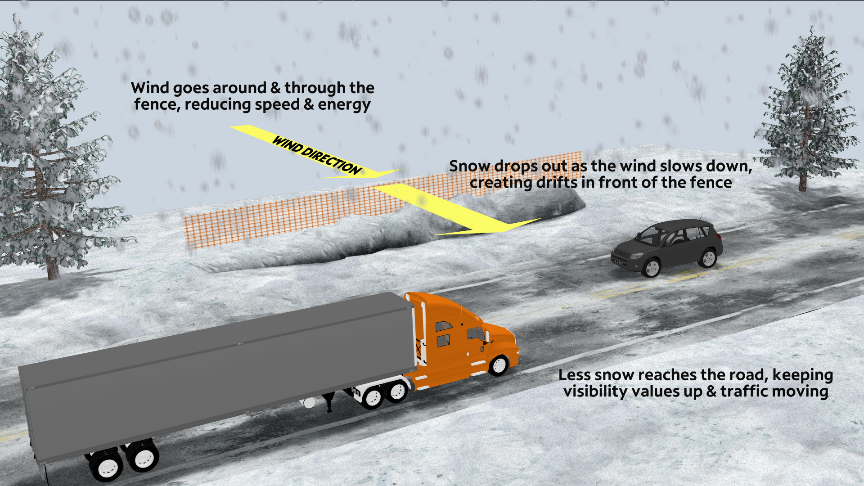
Snow Fencing for Residential Use
Snow fencing offers practical solutions for homeowners by minimizing the impact of snow accumulation. Let’s explore some residential applications of snow fencing.
Snow Fencing for Driveways
Snow accumulation on driveways can create hazardous conditions and impede accessibility. Installing snow fencing along the sides of driveways helps to create a barrier that prevents drifting snow from blocking the entrance. It reduces the need for frequent snow removal and ensures safer access to and from the property during the winter months.
Snow Fencing for Roof Protection
Excessive snow buildup on roofs can lead to structural damage, leaks, and potential collapses. Snow fencing installed along the eaves and edges of roofs can prevent snow from sliding and accumulating in critical areas. It helps to distribute the weight of the snow, reducing the risk of damage and ensuring the integrity of the roof.
Snow Fencing for Yard and Garden
Snow fencing can be used in residential yards and gardens to protect delicate plants, flower beds, and landscapes. By strategically installing snow fencing, homeowners can create windbreaks that minimize snow accumulation and prevent damage to outdoor plants and structures. Snow fencing also helps to maintain the aesthetics of yards and gardens, preserving the beauty of outdoor spaces during winter.
Maintenance of Snow Fencing
Proper maintenance of snow fencing is essential to ensure its longevity and effectiveness. Regular inspection, cleaning, and repair are necessary to keep the fence in optimal condition.
Regular Inspection and Cleaning
Inspect the snow fencing regularly to identify any signs of damage, such as broken slats, torn netting, or loose posts. Clean the fence by removing any debris, leaves, or snow that may obstruct its effectiveness. Regular inspection and cleaning help to identify and address any maintenance issues promptly, ensuring the continued performance of the snow fence.
Repairing Damaged Snow Fencing
If any components of the snow fence are damaged, they should be repaired or replaced as soon as possible. This may involve replacing broken slats, repairing loose netting, or reinforcing weak posts. Timely repairs ensure that the snow fence maintains its integrity and effectiveness in snow control.
Replacing Old Snow Fencing
Over time, snow fencing may deteriorate due to weather exposure, wear and tear, or damage. When the snow fence reaches the end of its lifespan or if it becomes ineffective, it should be replaced. Regularly assess the condition of the snow fence and plan for its replacement to ensure continuous snow control and management.
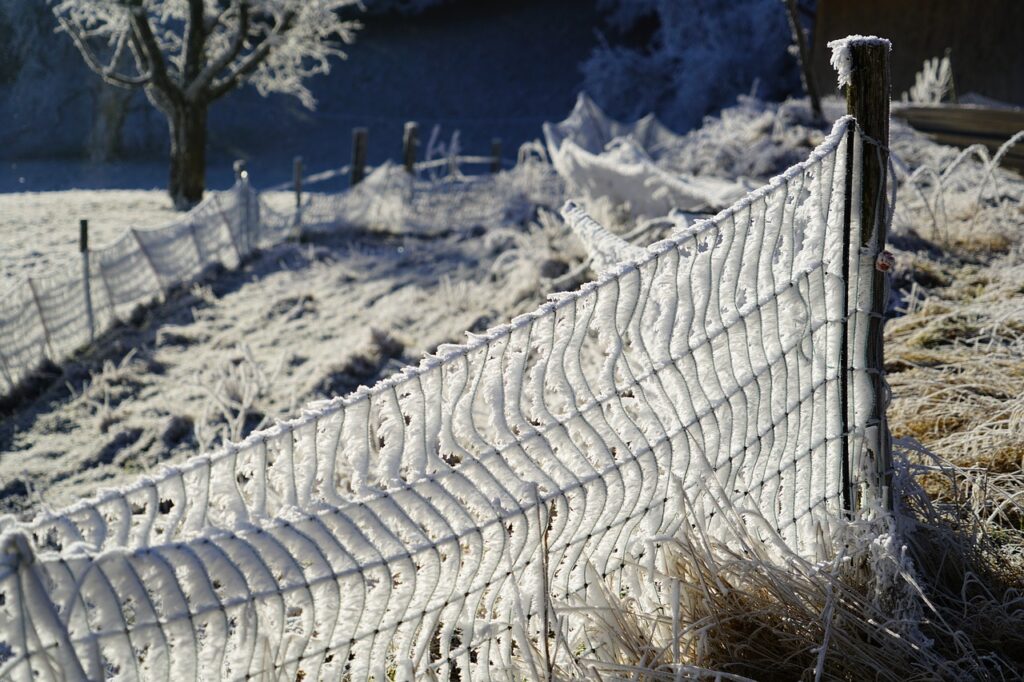
Snow Fencing Regulations
Snow fencing may be subject to local and regional regulations and safety standards. It is essential to familiarize yourself with the specific requirements in your area to ensure compliance and safety.
Local and Regional Regulations
Check with local authorities or municipal governments to determine any regulations or permits required for installing snow fencing. There may be guidelines regarding fence height, placement, and materials. Understanding and adhering to these regulations ensure that the snow fencing meets the necessary standards and serves its intended purpose.
Safety Standards for Snow Fencing
Safety is paramount when installing snow fencing, especially in areas where it affects roadways or public spaces. Familiarize yourself with safety standards and guidelines provided by organizations such as the American Association of State Highway and Transportation Officials (AASHTO) to ensure proper installation and maintenance. Following safety standards ensures the effectiveness and longevity of snow fencing while minimizing risks.
Environmental Impact of Snow Fencing
Snow fencing can have both positive and negative impacts on the environment. Let’s explore the environmental considerations associated with snow fencing.
Effects on Wildlife and Plant Life
The alteration of wind patterns through snow fencing can impact local ecosystems and wildlife habitats. Changes in snow distribution and accumulation may affect plant growth and survival, as well as impact wildlife that relies on specific habitats for shelter or forage. It is crucial to assess and minimize any potential adverse effects on local flora and fauna when installing snow fencing.
Sustainability and Green Alternatives
Considering sustainability is essential when choosing snow fencing materials. Opt for materials that are eco-friendly, such as recycled plastic or sustainably sourced wood. Additionally, exploring alternative snow control methods, such as snow melting systems or snow removal services, can help minimize the environmental impact of snow fencing in certain scenarios.
Recycling and Disposal of Snow Fencing Materials
Proper disposal or recycling of snow fencing materials is important to mitigate environmental impacts. If the snow fence needs to be replaced, check local recycling facilities or waste management guidelines for appropriate disposal methods. Recycling or reusing the materials reduces waste and promotes sustainable practices.
Common Mistakes in Snow Fencing
Avoiding common mistakes when installing and maintaining snow fencing is crucial to its effectiveness. Let’s explore some common pitfalls to avoid.
Improper Installation Techniques
Improper installation, such as incorrect placement, inadequate anchoring, or uneven tension, can significantly impact the performance of snow fencing. Follow installation guidelines specific to the type of snow fence and ensure proper alignment and tension for optimal results. Seek professional assistance if necessary to avoid costly mistakes.
Wrong Choice of Snow Fence
Choosing the wrong type or size of snow fence for the intended application can lead to ineffective snow control. Assess the specific requirements and conditions of the area where snow control is necessary and select the appropriate snow fence accordingly. Consider factors such as wind patterns, snow accumulation, and the desired outcome to make an informed decision.
Neglecting Maintenance
Regular maintenance is crucial to keep snow fencing in optimal condition. Neglecting to inspect, clean, or repair the snow fence can lead to reduced effectiveness and compromised snow control. Prioritize regular maintenance, and address any issues promptly to ensure the longevity and performance of the snow fence.
Snow Fencing in Extreme Climates
Snow fencing plays a vital role in extreme climate conditions, including arctic regions, mountainous areas, and coastal zones. Let’s explore how snow fencing adapts to these environments.
Snow Fencing in Arctic Regions
Arctic regions experience extreme snowfall and harsh weather conditions during the winter months. Snow fencing is strategically installed to reduce snow accumulation and prevent drifting in critical areas such as transportation routes, communities, and industrial sites. Special considerations are made to ensure the snow fence can withstand freezing temperatures, high winds, and heavy snow loads.
Snow Fencing in Mountainous Areas
Mountainous areas are prone to heavy snowfall and drifting due to unique topography and wind patterns. Snow fencing plays a crucial role in mitigating avalanche risks, protecting roads, and maintaining critical transportation corridors. Snow fencing is strategically placed to redirect snow away from avalanche-prone areas, ensuring public safety and reducing the need for road closures and avalanche control measures.
Snow Fencing in Coastal Zones
Coastal areas experience unique snowfall patterns influenced by oceanic conditions, wind, and salt spray. Snow fencing is used in coastal zones to prevent snow and ice buildup on roads, walkways, and structures. It helps to maintain accessibility and protect critical infrastructure in these regions, ensuring safe and efficient transportation.
Costs and Budgeting for Snow Fencing
Costs associated with snow fencing vary depending on several factors. Here’s an overview of the key considerations when budgeting for snow fencing.
Factors Affecting Snow Fence Costs
The cost of snow fencing depends on factors such as the type of material, length and height of the fence, installation requirements, and maintenance needs. Higher quality materials and larger fences tend to be more expensive. Consider these factors when estimating costs for snow fencing projects.
Estimating Materials and Installation Expenses
To estimate material costs, determine the length and height of the snow fence needed for the desired area. Different materials have varying price points, so research and compare options to find the most cost-effective solution. Installation expenses may vary based on factors such as ground conditions, terrain, and the need for specialized equipment or professional assistance.
Budgeting for Long-Term Maintenance
In addition to the initial installation costs, budgeting for long-term maintenance is essential. Regular inspections, cleaning, repairs, and potential replacement should be factored into the budget to ensure the ongoing effectiveness and lifespan of the snow fence. Proper maintenance helps to extend the lifespan of the snow fence and maximize its performance.
Conclusion
Snow fencing is a versatile tool that offers numerous benefits in snow control and management. By altering wind patterns, snow fencing reduces snow accumulation, enhances road safety, protects landscapes and structures, and prevents drifting and blowing snow. Its applications range from agricultural uses to residential purposes, catering to a wide range of snow control needs. With proper installation, maintenance, and adherence to regulations, snow fencing proves to be an effective solution in managing snow in various environments. So, embrace the world of snow fencing and enjoy the benefits it brings in maintaining safer and more accessible spaces during the winter months.
Visit FenceDude.org for more information and resources on all aspects of fencing.